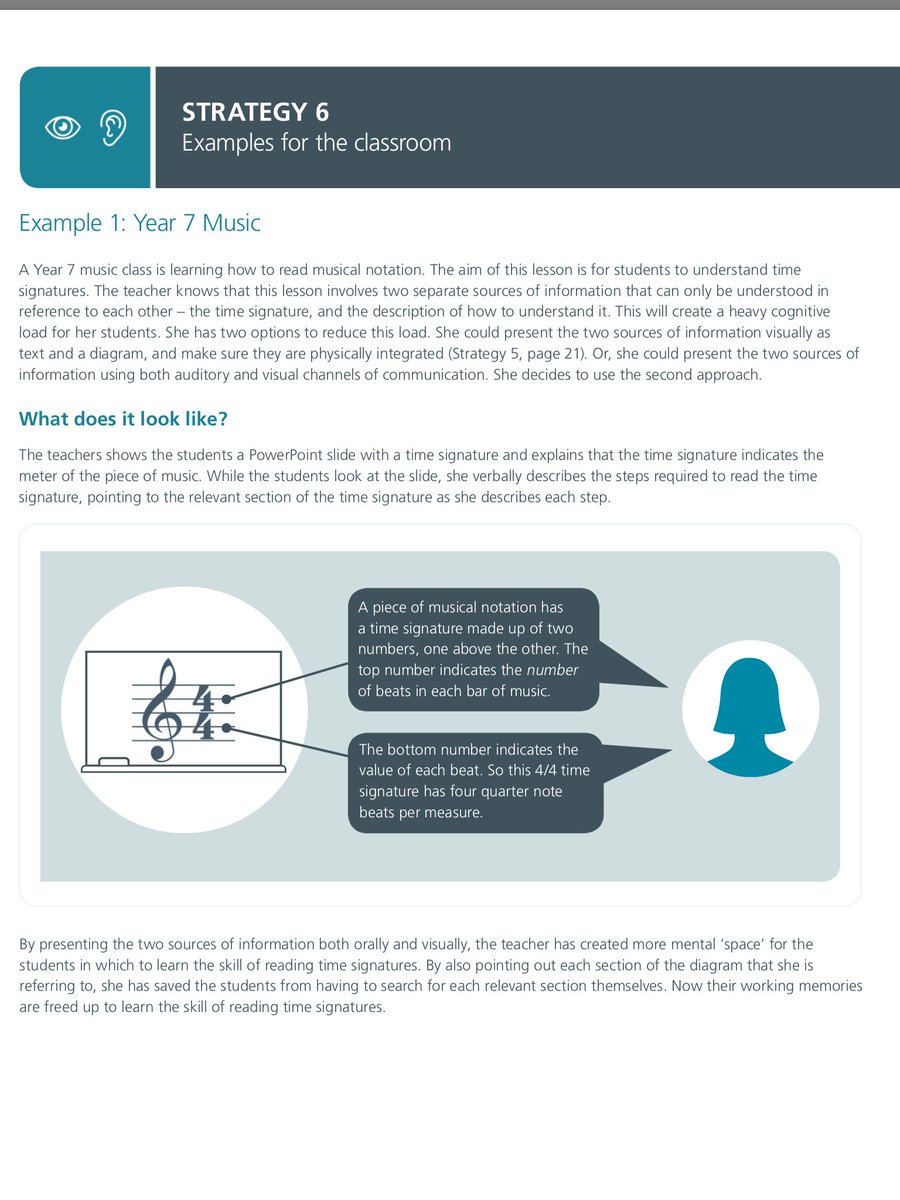Usha doesn’t venture further with her examples. But what about ‘musical working memory’, the capacity to hold a musical idea in mind, in the ‘mind’s ear’.
Oh, now we can expose the paucity of the example above, and as Gary Spruce pointed out, its utter ontological failure in respect to music.
But wait, some more explanation.
‘The cognitive load involved in a task is the cognitive effort (or the amount of information processing) required by a person to perform this task’. [2]
The central issue is the need to avoid cognitive overload. The reader may be already ‘glazing over’ at this point. If this is the case you are experiencing cognitive overload and I should have further broken down the information that I am presenting into more discrete elements. This would enable the building of a comprehensive picture of CLT and the issues arising. If there is cognitive overload then learning will be impaired if not negated, and long-term memory left deprived of new knowledge.
In the example the teacher is given a choice:
‘[The teacher] could represent the two sources of information visually as text and a diagram, and make sure they are physically integrated (Strategy 5, page 21). Or, she could present the two sources of information using both auditory and visual channels of communication. She decides to use the second approach.’ [3]
What is of note here is that what is referred to as the auditory channel is Usha’s ‘verbal working memory’. But what about the auditory channel being the music itself.
There is no mind’s ear in play.
Is it worth making a fuss about this?
Well, yes. Because it is an example of the dispensation of theory through limited understanding of the nature of music. The purveyors of the evidence informed/research informed movement, almost invariably fail to grasp the essential non-verbal nature of music, being ignorant of centuries of music educational pedagogical wisdom and the subtle role of verbal mediation in music instruction.
Within some of our schools CLT is likely to be flavour of the month. For the last decade at least, music teachers have been struggling to cope with the misrecognition of what is the nature of musical knowledge and experience seeing them coerced into demonstrating learning in unmusical ways.
So how did all those songs get into your head? Can it be explained by CLT?
Do music teachers really need to know about CLT?
Notes:
[1] Goswami, U. (2014) Child Psychology: A Short Introduction. Oxford University Press.
[2] Reif, F. (2010) Applying Cognitive Science to Education. Thinking and Learning in Scientific and Other Complex Domains. Cambridge, MA: The MIT Press.
I wonder if this inspired the example provided.
And what does page 25 have to say?

